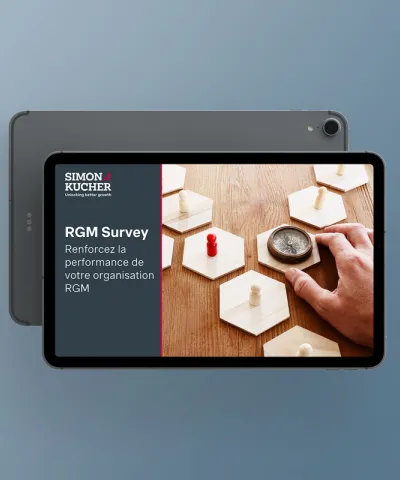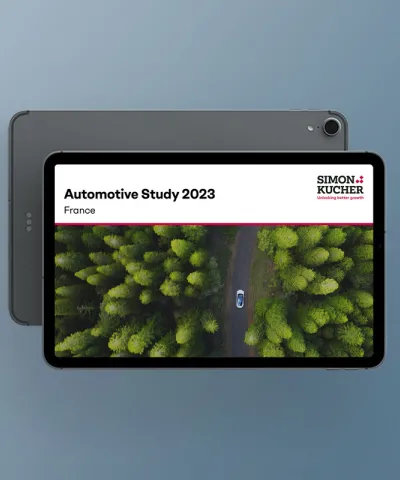Inflation in the Netherlands has risen to 11.9 percent, presenting Dutch companies with similar uphill battles that many businesses are facing around the world. Yet there is hope. Experts Jos Eeland, Onno Oldeman, and Reinout Mensing outline how making changes to pricing strategies can unlock sustainable future growth even through a crisis.
On April 1st Statistics Netherlands (CBS) announced that inflation had risen to 11.9 percent in March. This is the highest number since the peak of the oil crisis in 1975.
Early reports depicted the current wave of inflation as temporary, and some companies may even have claimed victory as forward buying customers inflated sales numbers. Yet, financial markets are now preparing for long-term impact. Input-cost inflation poses a risk of eroding margins and putting profitability under pressure for consumer goods manufacturers.
To combat the current cost crisis, pricing excellence has been catapulted to the top of the priority list in the boardroom, both short as well as long term. Organizations that can institutionalize pricing agility and best practices can build commercial resilience and protect profit margins. The ultimate objective is to come out of a (sustained) period of inflation stronger.
With costs rising across a variety of inputs, consumer goods manufacturers should and have been pushing for significant price increases. Empty supermarket shelves are exemplary of the fiercest negotiation round in years. Retailers temporarily removed products from the assortment and outcried publicly about suppliers using inflation as an excuse to exceedingly overprice their products.
Even though input cost increases are real, and price increases are justified, manufacturers are still struggling to successfully implement price increases. In our recent Inflation Pricing Study, we found that one fourth of companies in the Netherlands have neither implemented nor planned price increases. This means that in some cases, manufacturers lose out on negotiations to procurement teams who have become more effective than sales teams over recent years. A lack of fact-based argumentation and a joint value creation plan has pushed manufacturers’ backs against the wall.
Branded goods manufacturers used to be reluctant to share cost levels with their customers, for obvious reasons, now they’re even thinking about making raw material indices public – which was previously only available in the private label industry.
On top of the current cost crisis, supply chains are still recovering from COVID-19. For example, recent global semiconductors shortages forced factory closures in a wide range of industries. Durable goods manufacturers, especially, are still struggling to fill orders. This has led to the unique situation where record levels of pre-orders, often incentivized through discounts, have become a profit trap rather than an indication of a good start to the sales season.
While it might be tempting to (temporarily) win market share by keeping prices low, long-term profitability is at stake. Considering these developments, we have three guiding principles for the 2022 strategic pricing agenda:
1. Manage for profit
Even though it seems obvious to focus on profits, many organizations still steer based on volume and market share. Profit orientation is the only way to ensure a resilient and healthy business in the long term. For investors, the estimation of future earnings drives company value. Pricing power, the ability to charge the price you deserve for the value your product or service delivers, is the key underlying parameter. Amazon’s share prices increased >25 percent after the announcement of a 17 percent price increase for their Amazon Prime services.
Being able to increase prices while retaining your customers demonstrates pricing power and boosts profitability and long-term shareholder value. Achieving profit targets through pricing excellence should be a key priority for top management and should be communicated as an integral part of the company’s strategy.
2. Make pricing a cross-functional effort (with emphasis on ensuring cooperation between finance and sales)
In order to develop an agile pricing capability, it’s essential to establish cross-functional teams. Many companies delegate pricing responsibility to only one function or install a bureaucratic and siloed process between them. It’s still an exception for marketing or finance professionals to regularly check-in with sales to talk value creation.
By nature, pricing is a cross-functional topic where Product, Finance, Marketing, Sales, and Operations come together. Each function has a different angle on pricing, so taking a holistic approach will ensure the best outcome. Important pricing topics such as quantifying customer complexity, determining switching costs, and developing negotiation plans require cross-functional collaboration.
High inflation typically means high volatility, requiring rapid responses from your commercial organization. The challenge is to manage uncertainty and to keep up with the accelerated pace of the market. Finance and Sales need to be closely aligned to ensure time leaps between rising costs and price increases are as brief as possible.
In many companies the relationship between these two departments is not at the required maturity level. Changing this fast requires leadership. It starts with the CFO and CCO working closely together on pricing policies. Near real-time tracking of market developments and responding swiftly to demand signals is essential.
To enable a sound strategic pricing response, it’s essential to have an agile cross-functional pricing process with clear ambitions and validated strategic beliefs as starting points.
3. Prepare your story to trade
A blanket price increase with poorly prepared sales argumentation rarely ever achieves its goals. The key to successfully execute price increases is to take a differentiated approach and prepare a strong story to trade:
- A differentiated approach entails deal level target pricing, concessions, and walk away scenarios
- A strong story to trade includes solid argumentation for price increases and a joint value creation plan that illustrates a win-win scenario for both manufacturers and retailers
This joint value creation plan could, for example, be centered around category growth or pay-for-performance trade investments. The success of a deal is often determined during preparation, especially in big deal negotiations with key accounts. Although gutfeel often tempers price increase ambitions, long-term effects of hard ball negotiations are often overestimated.
While current market conditions are challenging to navigate, there is an abundance of opportunity for consumer goods companies to make long overdue changes to their pricing strategies and unlock sustainable future growth.
Are you interested in further insights about industry specific challenges regarding price inflation and price increases? Find out more.







